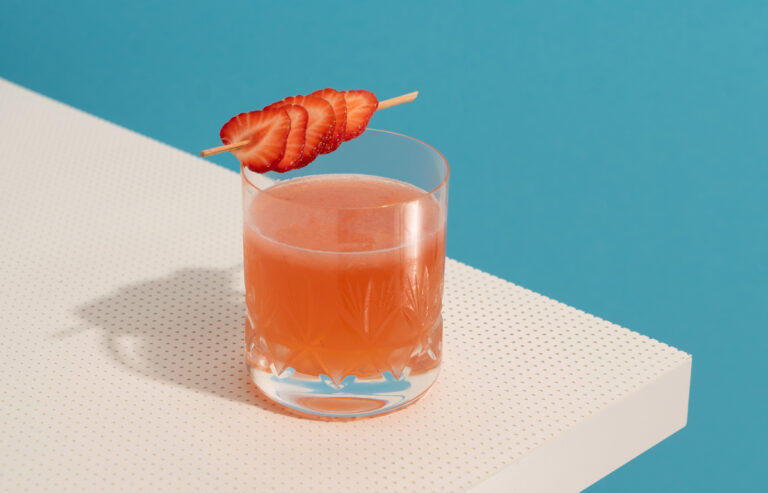Bottomless brunch: it’s everyone’s favourite pastime, but is it more than binge drinking in disguise?

If there’s one thing we can all agree on, it’s that bottomless brunches are great. Whether you’re a traditionalist who enjoys mimosas and eggs on a lazy Sunday, or drag brunch is the first of many stops on your big night out, it’s not hard to see why the culture of bottomless brunch has soared in popularity in the last few years—it’s incredibly fun.
I personally love it because, one, it combines both of my favourite things: alcohol and breakfast food—yes, in that order, don’t judge me. And secondly, because there’s so much variety. Not in the mood for a drum and bass brunch? Just go to a Beyoncé-themed one instead. Bored of prosecco? Try unlimited rum punch for a change. Went a bit overboard with your number one order, avocado on toast? Switch to bottomless dim sum to be able to stuff your face while still feeling somewhat ‘healthy’. The options are truly endless, so it’s no wonder why it’s fast becoming a weekend staple.
But like all good things in life, there’s a catch. While we may revel in the thought of free-flowing booze, in practice things can turn sour pretty quickly—if you dare, search ‘bottomless brunch’ on TikTok and you’ll see what I mean. Whether it’s videos of brunch-goers downing their freshly poured cocktails to make way for their next, or the dangerous Dutch courage a few too many glasses of prosecco afford others, everyone’s favourite hobby is concerning experts. Is bottomless brunch essentially normalising binge drinking?
Doctor Olivia Maynard, lecturer in Psychological Science at the University of Bristol and co-director of the university’s Tobacco & Alcohol Research Group, believes so. “The Chief Medical Officer defines a binge as anything over 6 units of alcohol in a day,” she said. “With a bottle of prosecco coming in at 8 or 9, it’s easy to imagine that bottomless brunchers could very easily exceed the threshold for a binge within their typical 90-minute window.”
But it’s not just the amount of alcohol we’re drinking that’s worrying. Often, the concern at brunches is whether we’re getting our money’s worth of booze or not, which eggs us on (no pun intended) to drink faster than usual. “It’s certainly the case that the faster you drink, the faster you’ll become drunk,” Doctor Maynard continued. “Our bodies can only metabolise alcohol at a certain rate, regardless of how much is circulating.”
Sure, this might not sound shocking, especially when you consider that bottomless brunches are literally designed to get those who partake in it drunk. And yes, I agree, we all deserve to let our hair down every now and again. But Doctor Maynard argued that we’ve become just too reliant on alcohol to lubricate our social interactions.
“Alcohol is a powerful psychoactive drug, and experts agree that it’s one of the most harmful drugs available. While over-consumption of most other drugs isn’t generally culturally acceptable, over-consumption of alcohol is almost exclusively lauded and encouraged,” she explained.
I know, this is exactly the opposite of what you’d like to hear—and I’m not trying to rain on your weekend plans, promise. Most of us are aware that binge drinking is detrimental to our health, both physically and mentally, but it seems this knowledge isn’t enough to stop us.
Last month, a survey found that the UK is the only country in Europe where alcohol consumption increased during the pandemic—and our favourite bars and restaurants have been listening to our increased demand. Alongside the usual trendy Instagrammable spots, high street chains like Turtle Bay and All Bar One have recently jumped on the bottomless brunch bandwagon, offering two hours of free-flowing bubbly with a meal for under £30.
Long gone are the days where bottomless brunch was reserved for special occasions and boujee birthdays. Instead, it’s become the norm to guzzle your body weight in prosecco before midday on any given weekend, often before food has even made its way to your table. It’s this normalisation that’s worrying experts, and not just from a health perspective.
There’s also the social aspects of bottomless brunches to consider, said Doctor Maynard, “While many people clearly enjoy bottomless brunches, others invited along may not want to drink very much, but are peer pressured into doing so.”
So, how can we make bottomless brunches a safer and enjoyable experience for everyone involved? Not getting too ahead of yourself seems the obvious answer, but putting that into practice when your glass is constantly being topped can be harder than it sounds.
Making sure we keep an eye on how much we drink is essential. “Say no to top-ups and only refill your glass when you’ve finished your previous one. That will help you keep a track of how much you’re drinking,” Doctor Maynard added. Who knew you could do such a thing? You could also record your drinking on an app that allows you to set and stick to a limit.
It’s also important to ensure that you get your money’s worth of food and non-alcohol drinks, too. If you do decide to sit out for a few rounds, small things like asking for your soft drink to still be served in a champagne flute can help avoid some serious FOMO.
That being said, Doctor Maynard stressed that, ultimately, the responsibility of being safe doesn’t sit solely on our shoulders: “It’s the role of the venue hosting the brunch to make everyone feel welcome and included, like making sure alcohol-free alternatives are attractive and good value for money.”
Let’s be honest, when we book a bottomless brunch, we know what we’re signing up for. But that doesn’t mean every brunch needs to result in a deadly hangover. And as someone who considers themselves quite the brunch connoisseur, let me tell you: the best bottomless pursuits are the ones you can actually remember.




